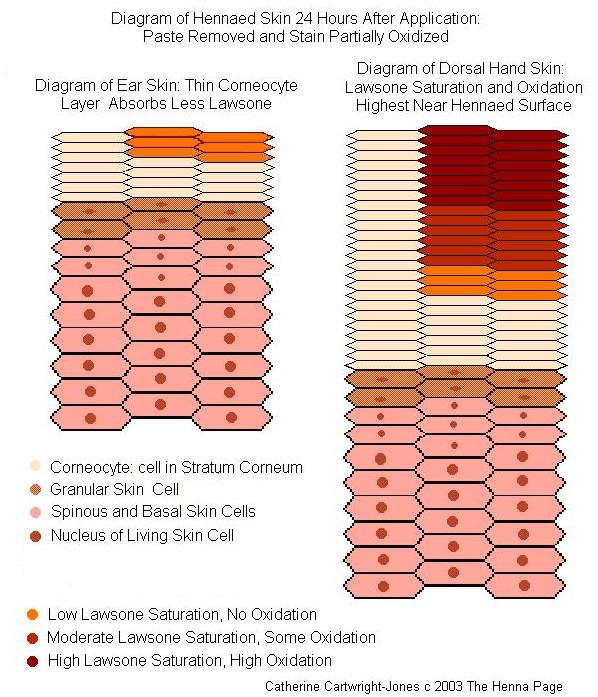|
Stratum Corneum: Why does the henna stain get dark? Catherine Cartwright-Jones c 2003 Kent State University When you remove the henna paste, the stain oxidizes and gets darker. If you cut an apple, and leave it in the air, it turns dark. Air oxidizes the henna stain, and the apple. The more dried out and corneated your skin cells are, and the deeper that layer, and the greater the dye saturation, the darker that stain will be. You can also force oxidation by putting something alkaline on the surface of your skin. Sweat is a safe alkaline. Urine is also a safe alkaline, but many people think its rude to rub urine on their skin. You can encourage oxidation by steaming or heating the skin. There are some traditional alkalines that are applied to skin to make henna very dark: camel urine, bat urine, and limestone. These can irritate your skin! |

| References:
"Number of Cell Layers of the Stratum Corneum in Normal Skin -
relationship
to the anatomical location on the body, age, sex and physical
parameters"
"Skin, the Human Fabric"
Back to Stratum
Corneum Index
Can't find what you're
looking
for? Try:
*"Henna,
the
Joyous Body Art"
the Encyclopedia of Henna Catherine Cartwright-Jones c 2000 registered with the US Library of Congress TXu 952-968 |